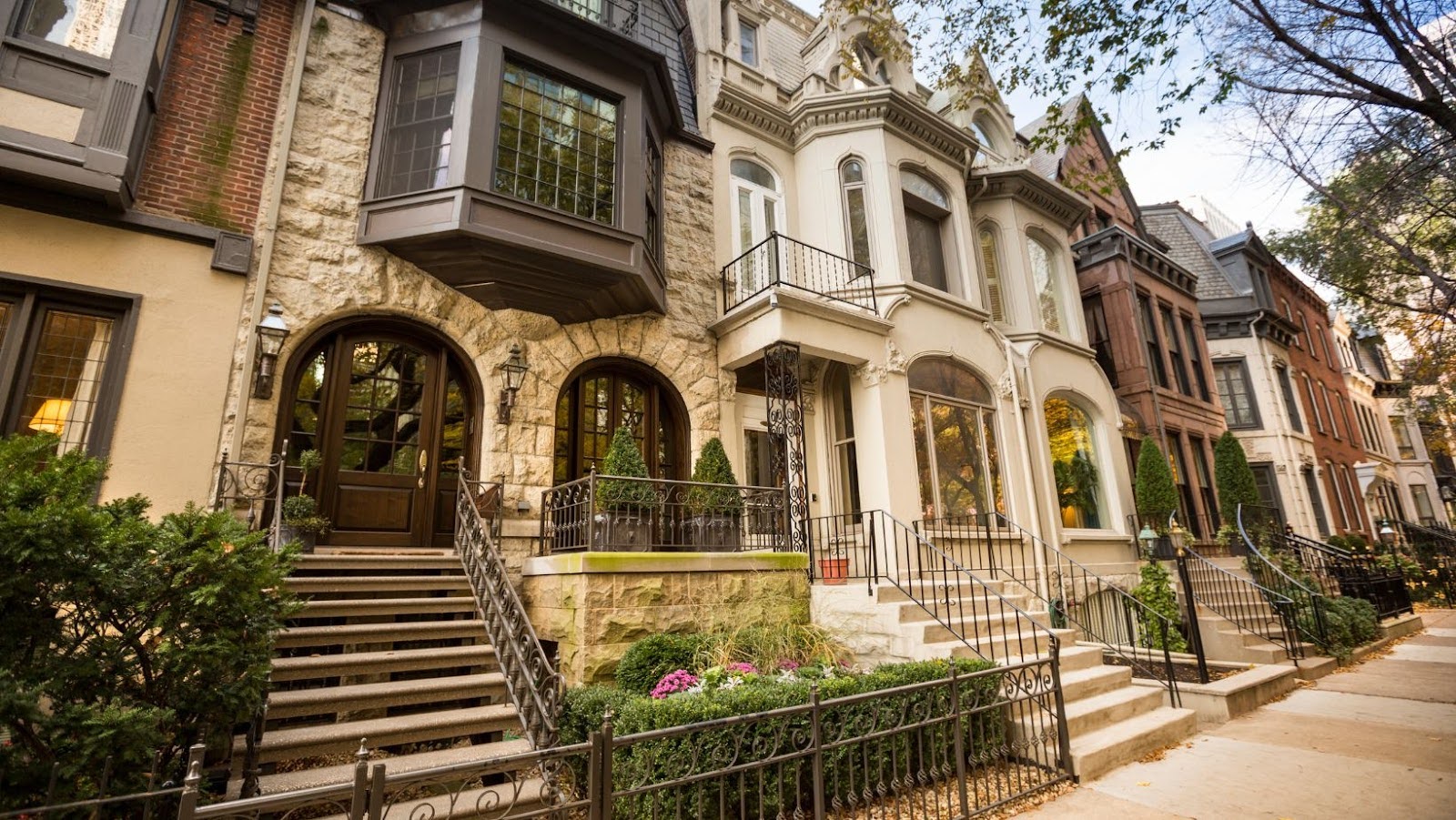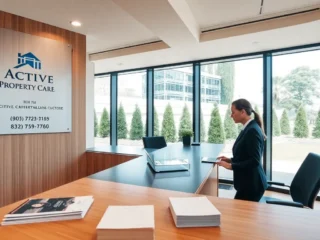
Philadelphia’s cityscape is distinguished by its iconic historic row homes. These structures offer a unique connection to the past while providing sought-after urban living. Brimming with character and architectural detail, these properties represent a significant portion of the city’s housing stock. Philadelphia row homes have a median age of 93 years, underscoring their historical importance and the common need for thoughtful updates. Renovating these treasures, however, presents a distinct set of challenges, from navigating stringent regulations to addressing the wear and tear of centuries.
This guide offers practical advice on modernizing historic row homes, seamlessly blending contemporary comforts with original charm. Such projects demand careful planning, respect for history, and an understanding of modern building practices to revitalize these urban gems for generations.
Renovating a historic row home involves meticulous planning, an appreciation for craftsmanship, and, often, specialized professionals. Owners must consider structural integrity alongside desires for updated kitchens, bathrooms, and improved energy efficiency. Philadelphia’s specific building codes and historic district regulations, designed to protect its architectural heritage, also make compliance key.
This comprehensive guide covers common structural concerns, strategies for sensitive modernization of key living spaces, suitable energy upgrades, techniques for restoring original elements, and the importance of selecting contractors experienced in historic preservation. The goal is to help homeowners make smart decisions and transform their historic properties into comfortable, functional, and beautiful homes that honor their past.
Understanding Philadelphia’s Historic Property Landscape
Philadelphia boasts a rich architectural heritage. Many of its neighborhoods are designated historic districts, overseen by the Philadelphia Historical Commission. This commission plays a vital role in preserving the city’s character by analyzing proposed changes to historically designated properties.

For instance, in May 2025, the commission added seven new properties to the Philadelphia Register of Historic Places, including the Southwestern National Bank on South Broad Street, demonstrating its ongoing commitment to safeguarding notable structures. These designations mean that exterior alterations, sometimes interior ones, require approval, a process designed to ensure renovations are sympathetic to the building’s original design and materials. The city’s efforts reflect a broader trend of valuing historic structures, as seen with the completion of renovations at the landmark Myers Schoolhouse in Greater Cincinnati after 16 years, a building originally constructed in 1891.
The complexities of dealing with historic properties are not unique to Philadelphia. In Lewes, Delaware, the Daisey family faced years of debate before completing a new home in the historic district. This process prompted the city to update its landmark preservation standards to include cultural and social significance.
Similarly, developers in Reading, Pennsylvania, faced potential jeopardy to historic tax credits after an unplanned demolition, highlighting the financial and regulatory intricacies involved. These examples underscore the careful approach required when renovating historically sensitive areas.
Understanding the local regulatory environment is the first step for any homeowner; Philadelphia’s commitment to preservation means that resources and guidelines are available, but professional guidance is often indispensable. The Philadelphia Housing Authority’s protracted efforts to build affordable homes in Strawberry Mansion, with costs escalating due to various factors, also illustrate the multifaceted development challenges in established urban areas.
Navigating Building Codes and Historical District Regulations
Successfully renovating a historic row home in Philadelphia hinges on a thorough understanding of and adherence to the city’s building codes and the specific regulations enforced by the Philadelphia Historical Commission, especially for properties within designated historic districts. These regulations are in place to maintain the architectural character that defines many of Philadelphia’s most beloved neighborhoods.
Obtaining the necessary permits can be complex. It often requires detailed plans demonstrating how proposed alterations will respect the building’s historic fabric. The Philadelphia Historical Commission analysis applications for exterior work and sometimes significant interior changes to ensure compatibility with the property’s landmark status.
For example, their approval for townhouses on the St. Laurentius Roman Catholic Church site required retaining the facade or salvaging historic elements. Homeowners must anticipate that this analysis process can add time and complexity to their renovation project. Knowing these requirements is crucial to avoid costly delays or rejections.
Beyond the Historical Commission’s purview, all renovation work must comply with the Philadelphia Building Code, which sets standards for safety, accessibility, and construction quality. This includes regulations for structural work, electrical systems, plumbing, and fire safety. Bringing these systems up to modern code for older row homes can be a significant undertaking, as existing conditions may not meet current standards.
For instance, structural repairs and masonry work often demand professional expertise due to these historic properties’ age and specific construction methods. It is advisable to consult with architects and contractors with particular experience with Philadelphia’s codes and landmark properties. They can help identify potential code-related challenges early in the planning phase and develop solutions that satisfy regulatory requirements and the homeowner’s vision. This proactive approach is vital for a smooth renovation process and for ensuring the historic home’s long-term safety and integrity.
Tackling Common Structural Issues in Historic Row Homes
Historic row homes in Philadelphia, many of which are approaching or have surpassed a century in age, often present a range of common structural issues that must be addressed during renovation. Foundations, typically constructed from brick or stone, can suffer from settlement, water damage, or mortar deterioration over time, requiring expert assessment and repair.
Party walls, shared between adjacent row homes, are another critical area; any work affecting these walls needs careful consideration to maintain structural integrity and good neighborly relations. Roofing systems on older row homes, particularly flat or gently sloped roofs, are prone to leaks if not properly maintained or replaced with appropriate materials.
Specialized materials like modified rubber for gently sloping roofs are often necessary. Furthermore, outdated plumbing and electrical systems are inefficient. They can pose safety hazards, necessitating complete upgrades to meet modern codes and demands. The reality of these potential issues was starkly illustrated in Pensacola, where a 119-year-old home faced demolition after numerous structural problems, including a tenant falling through rotten floorboards.
Addressing these structural challenges requires careful planning and the expertise of qualified professionals. A thorough structural assessment by an engineer or experienced contractor should be one of the first steps in any major renovation project. This will help identify existing problems and potential future concerns, allowing for a comprehensive repair strategy.
Philadelphia homeowners have resources available; the city’s Restore, Repair, Renew program offers low-interest loans for home repairs, which can be invaluable for tackling significant structural work. This program has already loaned over $18 million to residents, with an average loan of $30,480.
When undertaking such repairs, using appropriate materials and techniques for historic structures is important to ensure long-term stability and compatibility with the original construction. Proper remediation of structural issues is fundamental to preserving the home for future generations and ensuring the success of all other modernization efforts.
Modernizing Kitchens and Bathrooms with Sensitivity
Updating kitchens and bathrooms is typically a high priority for homeowners renovating historic row homes, as these spaces must meet contemporary standards of functionality and comfort. The challenge lies in achieving this modernization without clashing with the home’s inherent historic character.
A successful approach often involves blending modern amenities with design choices that respect the home’s architectural era. This might include custom cabinetry that mimics period styles, using materials like natural stone or classic tile patterns, and selecting fixtures that offer a nod to the past while providing modern performance.
The $6.5M Cobble Hill townhouse renovation is a notable example of thoughtful modernization. Though updated with a marble island and Thermador appliances, the kitchen was designed to follow the original layout, maintaining its role as the “engine of the home.” Focusing on high-quality materials and craftsmanship is paramount in ensuring that new elements feel harmonious with the old.
Thoughtful space planning is also crucial, especially in row homes where layouts can be narrow and sometimes unconventional. Christopher Poehlmann and Kate Kramer, seasoned DIYers, reworked and reconfigured the kitchen in their West Philadelphia twin home, demonstrating how even challenging spaces can be transformed effectively. Sometimes, achieving modern functionality might involve reallocating space, such as converting a small adjacent room into part of a larger kitchen or adding a new bathroom where one didn’t previously exist.
ELLE Decor A-List designer Nicholas Obeid’s renovation of a historic townhouse in Albany emphasized creating cohesion among the home’s floors. The first floor is for hosting, and the second is for the primary suite, showcasing how layout changes can enhance livability.
Considering the home’s overall flow and architectural integrity, the key is to make such changes thoughtfully. Homeowners should also budget extra for specialized materials and expect extended timelines, as quality historic renovations often require more than standard approaches.
Enhancing Energy Efficiency in Older Constructions
Improving energy efficiency is a significant concern for owners of historic row homes, as these older structures were built long before modern energy conservation standards. Common issues include uninsulated or poorly insulated walls, drafty original windows, and inefficient heating and cooling systems, contributing to higher utility bills and reduced comfort.
However, enhancing energy performance must balance preserving the home’s historic character. Historic row homes often require window replacements and insulation upgrades while maintaining original architectural integrity. This means that solutions like replacing original single-pane windows with custom-made, energy-efficient replicas or installing interior storm windows are often preferred over standard vinyl replacements that might alter the home’s appearance. Similarly, insulating solid brick walls requires careful moisture management to prevent long-term structural damage.
Several strategies can effectively and sensitively increase energy efficiency in historic row homes. Air sealing is a cost-effective first step, addressing gaps and cracks around windows, doors, and penetrations for pipes and wiring to reduce drafts.
Regarding insulation, options for solid masonry walls include adding insulation to the interior, which requires careful detailing to manage moisture. Attics, basements, or crawl spaces are often easier to insulate and yield significant energy savings. Upgrading HVAC systems to modern, high-efficiency units is also crucial.
Homeowners might also explore options like tankless water heaters and energy-efficient appliances. While the upfront investment for these upgrades can be substantial, they often mean long-term savings and increased comfort, making the historic home more sustainable for the future.
Preserving and Restoring Original Architectural Features
One of the greatest rewards of renovating a historic row home is the opportunity to preserve and restore its unique original architectural features, which contribute significantly to its charm and value. Elements such as intricate woodwork, plaster moldings, original fireplace mantels, hardwood floors with distinctive patterns, and historic tile work are often irreplaceable.
Restoration requires patience, skill, and a gentle hand, as these features can be delicate. For example, the Park Slope townhouse gut renovation preserved historic details like parquet floor borders and marble mantels, integrating them beautifully with lively decor. This approach demonstrates that modern living can coexist with historical authenticity. When features are damaged, careful repair is preferred over replacement whenever possible. If replacement is necessary, it should be done with materials and designs that are historically accurate.
The restoration process often involves specialized techniques and materials. For instance, old paint may need to be carefully stripped from woodwork to reveal the original grain, and plasterwork might require skilled artisans for repair. Homeowners should know that specialized materials like ornamental metals are often needed for historic rowhouse renovations, which can impact costs.
Frequently a focal point, fireplaces may need to be relined or have their hearths restored. Original flooring, if salvageable, can be refinished to bring back its former glory. The effort invested in preserving these details enhances the home’s aesthetic appeal and respects its history. As seen in the renovation in Albany, where original stair steps dating back to the late 19th century served as the “book’s binding,” these original elements tell the story of the home. They are worth the meticulous effort to maintain.
The Critical Role of Legal Expertise in Historic Renovations
Renovating a historic row home in Philadelphia is not merely a construction project but a legal undertaking that requires careful navigation of a complex regulatory landscape. Understanding and complying with historic preservation laws, zoning ordinances, and building permit requirements is paramount to a successful and stress-free renovation. This is where the advice of experienced legal professionals becomes invaluable.
Engaging with real estate law firms located in Philadelphia can help homeowners proactively address potential legal hurdles. Such firms can assist in interpreting local ordinances, preparing and analyzing applications for the Historical Commission, and ensuring all necessary permits are obtained correctly. This legal oversight helps prevent costly mistakes, delays, or even disputes with the city or neighbors.
Beyond permits and compliance with historic district guidelines, legal counsel can be crucial in other aspects of the renovation. This includes reviewing contracts with architects, contractors, and suppliers to protect the homeowner’s interests and clarify scope, timelines, and payment schedules. In densely built row home neighborhoods, renovations can sometimes lead to issues with adjacent properties, such as party wall agreements or access for construction.
Navigating the complex web of Philadelphia’s zoning regulations and historic preservation laws can be daunting for homeowners, and expert legal counsel is crucial to ensure your renovation project proceeds smoothly and compliantly, protecting your investment and the historic integrity of your property. The expertise offered by seasoned RS Law Group ensures that all work conforms to municipal requirements, safeguarding the property’s value and legal standing. Investing in legal advice early in the renovation process is a prudent step that can save significant time, money, and frustration in the long run, allowing homeowners to focus on the exciting aspects of restoring their historic property.
Finding the Right Contractors for Your Historic Project
Selecting the right contractor is one of the most critical decisions when renovating a historic home. These projects demand a level of expertise and sensitivity that goes beyond standard remodeling work. Contractors experienced in historic preservation will understand the unique construction methods of older buildings, be familiar with appropriate materials and restoration techniques, and appreciate the importance of preserving original features. They are also more likely to have relationships with specialized subcontractors, such as plasterers or wood restoration experts.
When vetting potential contractors, homeowners should specifically ask for references from past historic renovation clients and review portfolios demonstrating successful work on similar properties. The scale of the broader renovation market is significant, but finding those with a true landmark specialization requires diligence.
A thorough vetting process should include checking licenses, insurance (liability and workers’ compensation), and any professional affiliations with preservation organizations. It is also wise to get detailed bids from multiple contractors to compare costs, the proposed scope of work, materials to be used, and project timelines. Be wary of significantly lower bids than others, as this could indicate a misunderstanding of the project’s complexity or the use of substandard materials.
Clear communication and a good relationship are essential, as historic renovations can often uncover unexpected issues once work begins. Homeowners should anticipate the need to budget extra for specialized materials and expect extended timelines when renovating landmark homes. A well-chosen contractor will partner in navigating these challenges, providing solutions that respect the home’s history and the owner’s vision for its future.
Renovating Philadelphia’s Historic Row Homes: A Blend of Past and Present
Renovating a historic Philadelphia row home is a deeply rewarding experience, allowing you to blend modern living with the city’s rich architectural past. This journey, while challenging, transforms homeowners into stewards of Philadelphia’s heritage. Success hinges on careful planning, respecting the original character, and engaging skilled professionals, contractors, and legal experts. As Philadelphia evolves, the thoughtful renovation of its 93-year-old median-age homes is crucial to maintaining its unique urban fabric.
Owners can breathe new life into these venerable structures by addressing structural needs, sensitively updating living spaces, improving energy efficiency, and meticulously preserving original features. Programs like Philadelphia’s Restore, Repair, Renew loan initiative and specialized firms offer crucial support. Ultimately, a renovated historic row home stands as a testimonial to the harmonious blend of past and present, offering a unique and comfortable living space that continues to tell its story.













